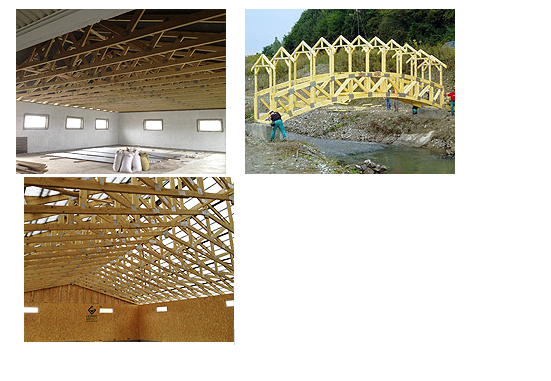TOXICITY OF OSB PANELS
Terra Construction uses OSB EGGER panels which are multi-purpose panels made with the unique technology of gluing certain wood chips in three mutually perpendicular layers. Dimensions, shape and orientation of chips in individual layers allow to achieve the best building-physical parameters of panels. Panels do not have natural defects of the grown tree (knots, cracks, etc.) The size of the chips in the surface layer allows emphasizing the natural structure, color and rusticity of natural wood and gives new possibilities for using the panels in interior design.
OSB EGGER panels are made of quality coniferous wood. Basically spruce is used, and partially - pine tree. The chips are thin, but having a large surface, the panels are carefully dried and covered with synthetic resin and a certain amount of paraffin emulsion. The production of panels constitutes a continuous compression process using high pressure and temperature. Exceptional mechanical quality of the panels is achieved by the selection of suitable wood, a certain form of wood chips and, to a large extent, mutually perpendicular orientation of the three layers of the slab.
OSB EGGER is a material suitable for use in wooden (ecological) structures, which has a great perspective.
TOXICITY OF EXPANDED POLYSTYRENE?
The rapid polystyrene use increase throughout the world, as the most efficient, environmentally friendly and very convenient when mounting insulator, especially in housing construction, has seriously alarmed the producers of other insulating materials.
As you know, competitive struggle is carried out in different ways, and there are already rumors about the supposedly harmful influence of this material to human health. They were particularly enthusiastic about creating an opinion that polystyrene expels formaldehyde. Distributors of these ridiculous statements are not at all embarrassed by the fact that polystyrene foam, which was invented many years ago by the largest German chemical concern BASF, is 98% made up of plain air and has been widely used in many industries, including food, for a decade. During this time period, anywhere in the world there was no single attempt to forbid use of high-quality polystyrene foam. These rumors have not disturbed the North American and European manufacturers of SIP at all. Nevertheless, for the sake of confidence, the International Structural Insulated Panel Association (SIPA) has agreed with the very authoritative American Plywood Association (APA) to conduct a special in-depth study of SIP for the presence of formaldehyde in them. We must pay tribute to APA, it took the task seriously and with the American type alacrity. A large number of various tests were carried out on the presence of any undesirable ingredients influencing human health in structural insulation panels.
In the final report, which by the way is completely accessible and can be easily obtained, it is convincingly established that all components of SIP practically doesn’t contain neither formaldehyde nor any harmful substance. This is also confirmed by the well-known, approved by all developed countries document named the International Building Code (IBC), which places polystyrene foam as one of the most energy-efficient and environmentally friendly insulation materials. Thus, this study put an end to all the speculation about the SIP harmful influence to health.
SIP-BASED HOMES ARE FLAMMABLE
Flammability of the walls is the main topic of the disputes between supporters of wooden and brick houses. Flammability of any building material is a disadvantage. Why do not they forbid building individual homes from combustible materials? Because non-combustible walls do not protect either form fire or arson. This is a fact. Fires occur in any house. It does not depend on the material of the walls. Walls do not burn. The interior contents is the source of fire. According to statistics, household items are ten times more likely to become objects of ignition than other materials, and they cause spread of fire. In more than 90% of cases, people die because of poisoning by burning products of what inside the buildings (furniture, carpets, interior decoration, etc.). Moreover, any residential building today, like a barbecue top, is filled with a variety of flammable materials. With the only difference that the house is a one-time, barbecue top, even if its walls are made of stone.
The main difference between an individual wooden house and a brick house is that a foundation and ash remain from the wooden house after a fire, and the foundation and walls are left from the brick house, which are subject to demolition due to loss of strength by 60-70%.
The combustibility of walls is of great importance only in apartment buildings. This is a matter of people's safety. Even with non-flammable walls in high-rise buildings, several apartments and even floors often burn out. Instant fogging of the porch cuts off the evacuation path on the upper floors. The more time the firefighters have, the more people will be able to save. When extinguishing a fire in a block of flats, there is no question of saving a separate apartment. The task of firefighters is to localize the fire and save people. Typically, the apartment where the fire occurred burns out completely.
For two-story houses, the material of the walls does not matter much. Everyone who is able to evacuate, always have time to do it. Who for some reason could not be evacuated, dies of carbon monoxide before the walls and ceilings begin to burn.
HOUSES FROM SIP IN THE WEST ARE DESIGNED FOR THE POOR AND HOMELESS PEOPLE
No one ever claimed that SIP technology is cheap! This technology is positioned in the Western market as a technology of "green" construction (Green Building) and energy saving (Energy Star)! SIP technology is used for construction of objects from garden houses to castles and office buildings. The luxury of furnishing and interior design of individual SIP houses is impressive. Technical equipment is a separate conversation topic. Speaking of "houses for beggars": "Pumpkin's house" can be built from any material. The Canadian house is not for the poor, but for the smart.
CANADIAN HOUSES AND RODENTS
Rodents are also numerous in developed countries, where Canadian houses have been exploited for more than half a century not only as dwellings, but also as warehouses, shops, etc. It is logical to seek an answer to this question abroad, where the experience of operating SIP houses is incomparably greater. Thus, according to American sources, Canadian houses do not have any special disadvantages in relation to rodents compared to conventional wooden houses. It turns out that we are dealing with a myth again: there are no facts of special "love" of rodents to SIP panels, there are just rumors.
The main note: the problem of "SIP and rodents" does not exist! There is a problem of "rodents and insulation". Rodents can damage the insulation, is they have access to it, violating the thermal covering of the house. It does not matter what walls are insulated: brick or frame and what kind of insulation is used. All modern effective insulators cannot resist the attack of rodents without proper protection measures.
SIP construction expanded polystyrene is tightly closed with boards and OSB panels. This prevents the access of rodents to the insulator. It is claimed that the special structure of the OSB-3 panels creates an insurmountable barrier for rodents. Indeed, the impregnated chipboard in the OSB is hard and brittle, like glass, and it is necessary to work with OSB in gloves. Expanded polystyrene is inedible for rodents. When discussing the problem of rodents, one should remember that rodents prefer to use soft fiber-based insulation, including slag wool, as material for their nests.
However, this is all theory. In practice, we still have not encountered with SIP damaged by rodents. Therefore, we do not recommend any special measures to protect against rodents.





